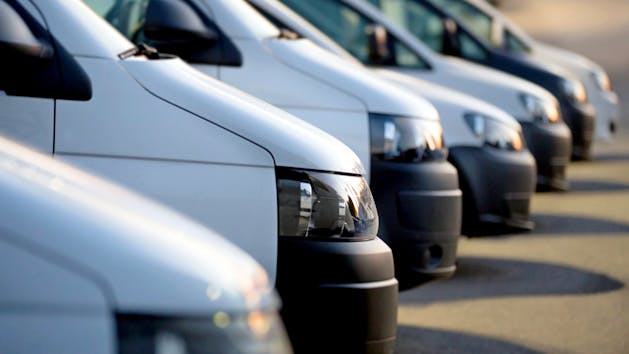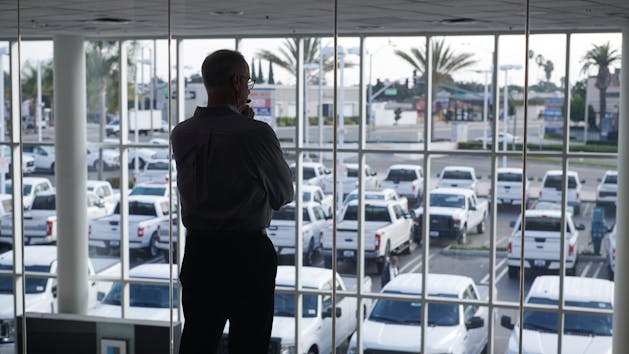Find the right solution for your business with our free Fleet Management Buyer’s Guide.
Why Safety Will Never Be Fully Automated
Everyday drivers strained by long daily commutes anxiously await the arrival of self-driving cars that will make avoiding accidents a thing of the past. More recently, the trucking industry has joined the consumer automotive industry in tracking a self-driving future. Despite what seems on the surface like the next hot trend in making our lives easier, it’s important to remember that, no matter the size or shape of the vehicle, safety is something that can never be fully automated.
A recent study entitled “Reality Check” published by the Insurance Institute for Highway Safety found that newly popular electronic driver-assist systems, including collision mitigation, advanced cruise control and lane assist are only as effective as the drivers behind the wheel. Contrary to the belief that driver assist technologies will make human attention unnecessary, it’s imperative every driver, professional or non, understand the limitations of these systems to truly utilize them properly and maintain safe driving habits at all times.
When it comes to commercial fleets, telematics solutions offer easy ways for businesses to improve safe driving habits as well as streamline compliance with the latest mandates. But the pressure to stay ahead of ever-evolving safety legislation is greater than ever, making it necessary for fleet managers to stay aware and involved in the day-to-day management of their drivers’ operating behaviors.
“In the trucking industry, if you aren’t safe, you can’t operate. It’s the same for our customers – they don’t hire a trucking company with a lower safety score,” says Tom Choi, Vice President of Operations at United Global Logistics (UGL), a Verizon Connect customer.
Ever since the Federal Motor Carrier Safety Administration (FMCSA) published its final electronic logging device (ELD) rule, also referred to as the ELD mandate, in December of 2017, the transportation industry has grappled with the issue of oversight in the truck cabin. In addition to this kind of new regulation, operators are preoccupied with maintaining and enforcing compliance with their drivers, while drivers are increasingly worried that such regulatory constraints and the use of automation could endanger their livelihood on a mile-to-mile basis.
Verizon Connect safety program consultant Brad Penneau has dedicated the majority of his 30 year career to transportation safety and has written five best-practice safety, compliance and risk management manuals. “Each operation I encounter is unique, and each has to take a custom approach to how they best institute organizational changes to adhere to industry best practices if they want to be successful.”
Discussing the changes in the industry he’s seen over the years, Penneau calls out the unjust suspicions lingering from many operators around the nature of telematics. “There’s a culture of negativity in the industry connected with tracking technology,” he says. “It’s the job of business owners to introduce automation in a positive manner and champion a culture of safety to improve business for all.”
Penneau’s overall perspective on the changing industry places equal responsibility on drivers to improve their time-honored operator skills with newly available information and business owners to organically cultivate a culture of safety within each of their carriers.
“Owners are mitigating their risk by empowering drivers to manage and protect themselves better by delivering data that can help them enrich their lives as well as their safety in their profession.”
Whether your fleet is large or small, safety needs to be priority number one to ensure growth and longevity of your business. Managers need to be vigilant in identifying signs of drivers who might need coaching to improve driving behavior. Poor driving habits could also be indicators of substance abuse or related issues that could potentially impair job performance.The National Highway Traffic Safety Administration (NHTSA) recently launched a public awareness campaign to stop alcohol- and drug-impaired driving. The campaign, cross-channel campaign will run nationwide through September 3, the Labor Day holiday weekend.
The time is now for business leaders to take the initiative to help their drivers embrace technology-enhanced safety monitoring as a benefit to their overall careers rather than viewing it as big brother watching over them.
When it comes to safe driving behavior, all the data in the world cannot replace a driver who is aware and focused on their own safety as well as that of the drivers around them. Each member of your fleet, from management to individual drivers, should strive to strike the right balance of automation, tracking, and trust, supplemented with the right technology for your unique business.
Find out how our platform gives you the visibility you need to get more done.



